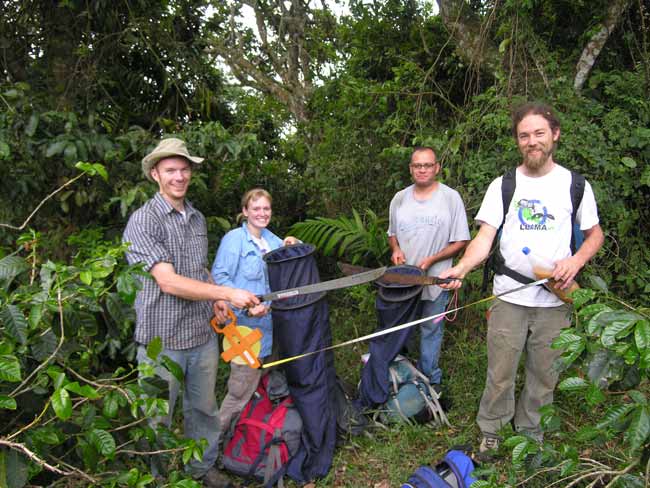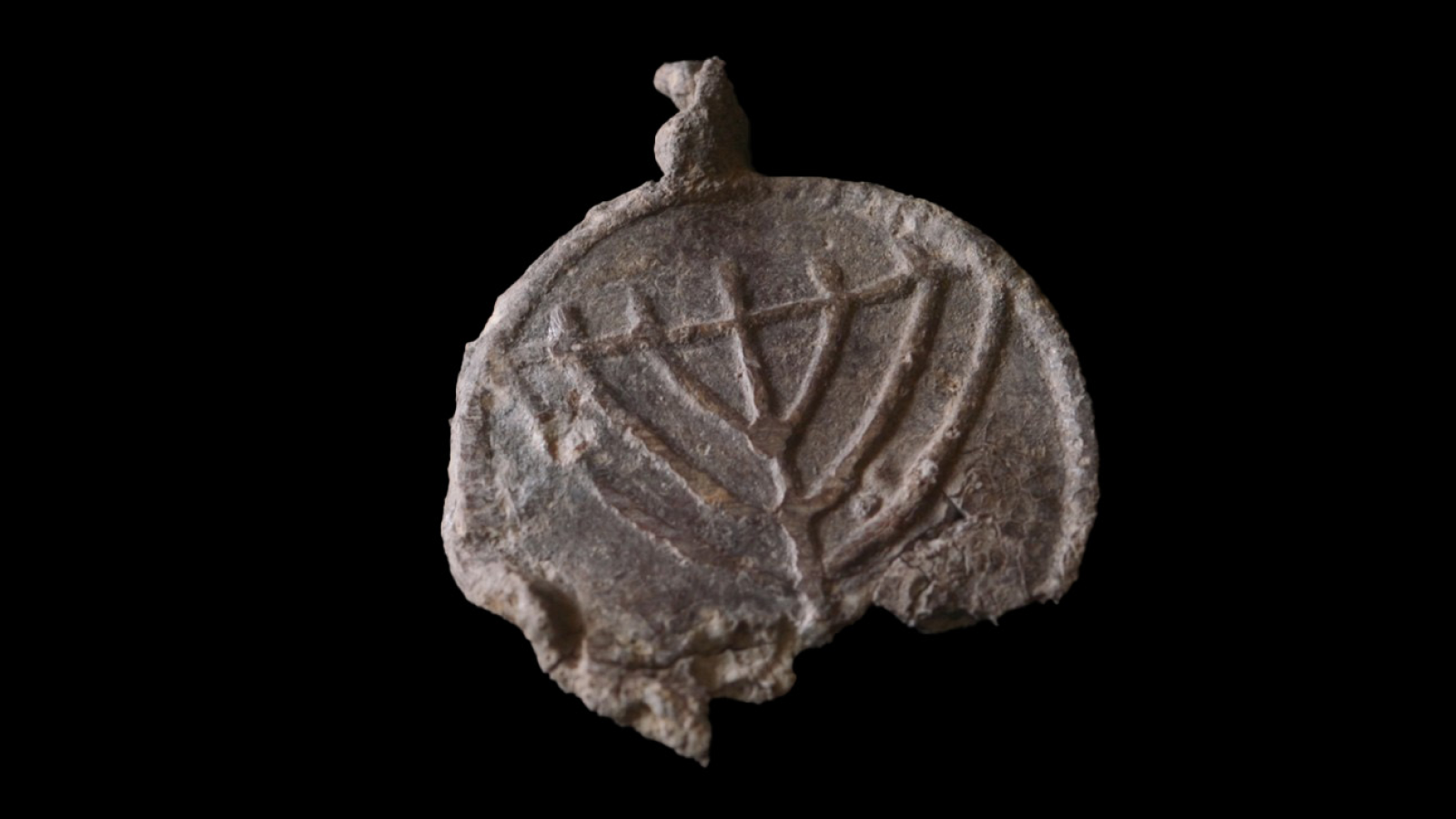Following the Adventurous Ant Trail

This Behind the Scenes article was provided to LiveScience in partnership with the National Science Foundation.
"This work will be physically demanding. You will need to carry bulky sampling supplies into rugged terrain. Some sites may be swelteringly hot, others cold and rainy. You will need to move off trails into dense forested habitats. Long hikes may be required … There will be mud and mosquitoes."
Although a hard-labor camp could be a reasonable match for that description, in reality, the harsh conditions are what await student field crews studying ants in Central America under the guidance of biologist John Longino of Evergreen State College.
Believe it or not, there is no shortage of fresh-faced undergraduates willing to confront the daunting challenges catalogued above (which were excerpted from a recruitment ad).
But members of Longino’s work crews must be more than just willing to work; Longino warns them: "This should sound like fun to you."
Ant Power
Part of that "fun" comes from learning about the ecological power of ants, which according to many measures are among the most dominant organisms of tropical forests.
Get the world’s most fascinating discoveries delivered straight to your inbox.
For example, the total estimated weight of all Amazon ants is four times the estimated weight of all Amazon land vertebrates, including all mammals, birds, reptiles and amphibians.
Ant species abound in tropical forests. The crown of a single tropical tree may harbor over 50 ant species, and several hundred hectares of tropical forest may harbor over 500 ant species. With ants so abundant, every animal that lives in tropical forests must deal with them, says Longino.
In addition, ants, which can each carry more than three times their own weight, act as "ecosystem engineers," moving around huge amounts of soil while excavating nests. They are also important scavengers and predators of other small invertebrates, including other ants, as demonstrated most dramatically by nomadic army ants, which are "the number one enemy of most ant species in the tropics," says Longino.
"The sight of a solid, three yard-wide carpet of ants, one million strong, slowly marching across the forest floor attacking other species of ants and insects is extraordinary," he says.
But contrary to Hollywood portrayals, army ants don't drag people down and eat them alive. Nevertheless, phalanxes of army ants do routinely invade homes in the tropics. They typically spend several hours rummaging through a dwelling, and then retreat carrying their quarry: chopped-up bits of roaches and scorpions, says Longino.
Not restricted to tropical forests, ants are key players everywhere, except in arctic and high mountain ecosystems. Evidence of the worldwide ubiquity of ants includes the fact that every language has a word for "ant," says Longino.
Longino only half-jokingly adds, "Because I can find my study subjects wherever I go, I never lack for something to do."
Where the Ant Action Is
Much of Longino’s recent work is part of the Project LLAMA, or the Leaf Litter Arthropods of Meso-America, a project supported by the National Science Foundation. LLAMA researchers search out new insect species and help identify biodiversity patterns in different regions and environments in Meso-America.
Longino’s crews kick-off each field season by poring over maps and consulting local institutions to identify promising study sites and then traveling to the sites. It’s no easy task, because the sites are usually located in remote, often mountainous terrain. Says Longino, "Central America has been inhabited by people for over 12,000 years, and so most remaining patches of forest have survived only because they are hard-to-reach."
In addition to conquering the geographic obstacles, Longino’s crews face various other threats when they explore politically unstable or bandit-patrolled regions.
Yet, once safely ensconced in each study site, the researchers sample ants and other insects in the leaf litter resting on the forest floor. Leaf litter is the focus because most of the forest’s plants and animals eventually fall into it, and then decompose with the help of a great diversity of ants and other insects. Therefore, leaf litter harbors a disproportionately large percentage of ant species.
A case in point: Longino and his crew counted 270 species of ants, or 60 percent of the forest’s ant species, in samples of leaf litter at one Costa Rican research station.
The researchers gather ants from the litter by creating 250 meter-long transect lines on the forest floor, collecting and sifting leaf litter along those transects, and then carrying bags of sifted litter back to a shelter.
Then, in what Longino describes as "a giant sample hanging party," the crews pour the sifted litter into 100 special mesh sacks, and then hang the sacks, which taper into collecting cups of ethanol that catch the ants and other insects that fall out.
Other collection techniques include baiting ants along hiking trails, as well as beating bushes with sticks to dislodge ants and other insects, forcing them to rain down on catchment sheets stretched out below.
Through these methods, Longino and his field crews have identified the existence and ranges of dozens of new ant species as well as many new ant behaviors.
For example, some years ago, when Longino discovered an ant species that builds nests in clay banks, he also discovered this species’ unique defense against army ants: If an army ant approaches one of their bank nests, a worker ant drags a pellet to the nest entrance, and thereby corks it shut. "These ants basically slam the door and seal themselves inside when, and only when, army ants approach their nests," says Longino.
What’s in a Name?
Longino justifies his ceaseless search for new ant species by pointing to a Chinese proverb hanging on his office door: "The beginning of wisdom is calling things by their right name." Longino hopes that the wisdom he imparts by giving ants their rightful names and improving our understanding of their ecological roles will promote their conservation. "Once something has a name, it officially exists," he says.
But recognizing that he is working during a great extinction, one that claims dozens of species daily, Longino acknowledges, "We are, in part, running a salvage operation. Some of the museum specimens we collect in Central America will probably — like Holocaust evidence — eventually provide the only physical proof of what once existed."
For more on Longino’s research, including video, click here
Editor's Note: This research was supported by the National Science Foundation (NSF), the federal agency charged with funding basic research and education across all fields of science and engineering. See the Behind the Scenes Archive.


